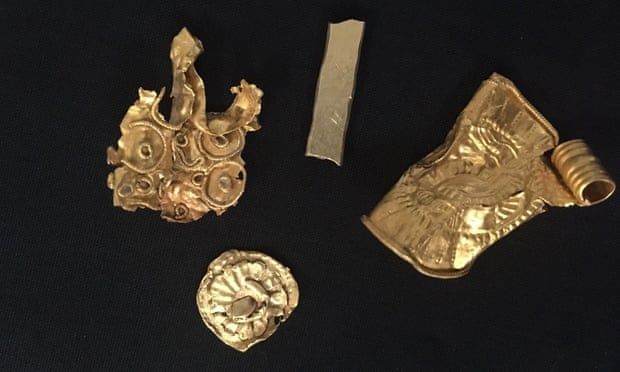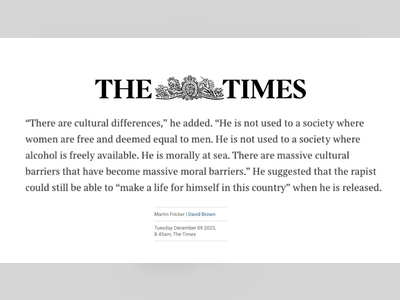
Norfolk treasure newly declared as England’s biggest Anglo-Saxon coin hoard
More than 130 gold coins unearthed by metal detectorists from a field in west Norfolk over a period of almost 30 years have been declared the largest hoard of such items from the Anglo-Saxon period found in England.
The 131 coins, as well as four other gold objects dating to 1,400 years ago, were sporadically discovered between 1991 and 2020, but it was only on Wednesday that an inquiry deemed them to be part of the same hoard.
Most of the objects were found by a single anonymous detectorist who reported his finds to the relevant authorities. However, 10 of the coins were found by David Cockle, a serving police officer who was jailed for 16 months in 2017 for illegally trying to sell them. Two of the finds concealed by Cockle have since disappeared into the antiquities trade.
The coins are mostly Frankish tremisses and include nine gold solidi, a larger coin from the Byzantine empire worth three tremisses. The discovery of the other objects, including a gold bracteate (a type of stamped pendant) and a small gold bar, suggests the coins should be seen as bullion, valued by weight rather than face value.
 Gold bracteate, gold bar and two further
artefacts thought to be jewellery fragments, discovered in Norfolk, part
of a hoard that Norwich Castle Museum hopes to acquire.
Gold bracteate, gold bar and two further
artefacts thought to be jewellery fragments, discovered in Norfolk, part
of a hoard that Norwich Castle Museum hopes to acquire.
On Wednesday the coroner for Norfolk opened an inquest to determine whether the finds constituted treasure under the terms of the Treasure Act (1996), which would make it property of the crown. Typically, any two or more coins that contain more than 10% precious metal and are more than 300 years old are defined as treasure.
The crown will claim a find if an accredited museum wishes to acquire it for public benefit and is in a position to pay a reward equivalent to the full market value. In this instance, Norwich Castle Museum hopes to acquire the hoard with the support of the British Museum, where Treasure Act cases are always prepared.
Tim Pestell, the senior curator of archaeology at Norwich Castle Museum and Art Gallery, called it an “internationally significant find”. He said: “Study of the hoard and its find spot has the potential to unlock our understanding of early trade and exchange systems and the importance of west Norfolk to East Anglia’s ruling kings in the seventh century.”
The decades either side of 600AD were a golden age for Anglo-Saxon England. The largest find of gold metalwork from this period was the Staffordshire hoard in 2009, which contained more than 5.1kg of gold and 1.4kg of silver.
The previous largest coin hoard of this period was 101 coins in a purse, discovered at Crondall, Hampshire, in 1828.
Perhaps the most famous discovery was the burial ship at Sutton Hoo in Suffolk, popularised by the Netflix movie The Dig. The Sutton Hoo hoard included a purse of 37 gold Frankish coins, three blank gold discs the same size as the coins, and two small gold ingots.
Gareth Williams, the curator of early medieval coins at the British Museum, said: “This is a hugely important find. It is close in date to the famous ship burial from Sutton Hoo in Suffolk, and although it doesn’t contain as much gold as the whole of the Sutton Hoo burial, it contains many more coins.
“In fact it is the largest coin hoard of the period known to date. It must be seen alongside other recent finds from East Anglia and elsewhere, and will help to transform our understanding of the economy of early Anglo-Saxon England.”










